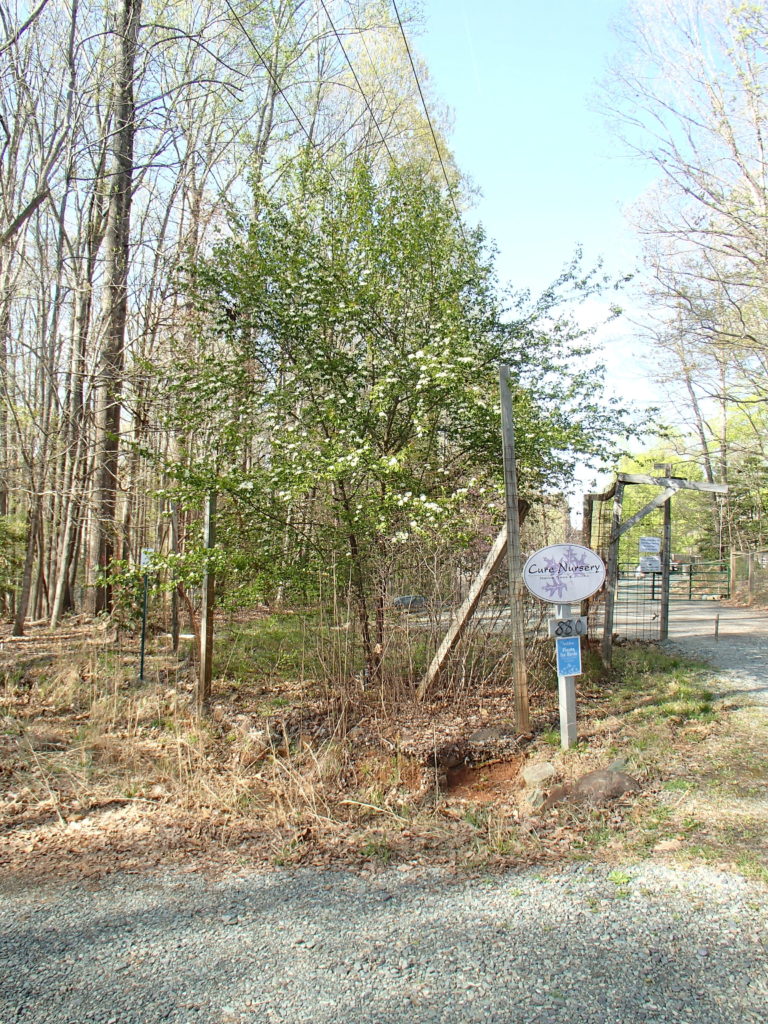Smooth Blackhaw, native to much of mid-latitude Eastern and central U.S., is a large deciduous shrub or small tree which usually grows to around 15 feet tall and wide, but if grown as a single-stemmed tree form, it can reach up to 30 feet. It thrives in full sun to part shade and dry-to-mesic soils. Unless pruned to a single-stemmed tree-like form, Smooth Blackhaw will typically have several sturdy stems with many smaller branches, leading to an irregular or rounded tree-like crown. Smooth Blackhaw has a very showy floral display in spring. In peak bloom, it is covered in 4-inch flat-topped cymes arising at the end of each of the many stems. These flower clusters turn into clusters of dark blue-black, edible (technically), berry-like drupes which support a variety of bird species and look handsome against the shiny reds and purples of the fall foliage.
NURSERY HOURS
Wednesday: 10-4 Thursday: 10-6 Friday-Saturday: 10-4 Sunday: 12-4
Viburnum prunifolium

Key Info
Scientific Name: Viburnum prunifolium L.
Common Names: Smooth Blackhaw, Blackhaw Viburnum, Plum Leaf Viburnum, Stagberry
Family Names: Adoxaceae (Viburnum Family)
Plant Type: Tree / Shrub
Leaf Retention: Deciduous
Flower Color: White
Additional Info
Habit: Multistemmed, woody shrub or small tree with rounded, irregular crown and medium texture. The bark is smooth early on, becoming platy and gray-black with age. The root system consists of a branching woody taproot. The plant will produce root suckers when it has reached its mature size.
Height: 15'
Spread: 12'
Soil Conditions: Moist well drained to dry, acid to circumneutral (pH 6.8-7.2) soils, loamy, clay-loam, sandy-loam, or somewhat rocky.
Leaves: Leaves are opposite, dark green, up to 3 inches long and 1 to 1½ inches across, oval with pointed tips, glabrous on both their lower and upper sides, and finely serrated along their margins. The slender petioles are up to 1 inch long and reddish but not winged like nannyberry (V. lentago). Fall foliage color is variable from dark green, burgundy, red, orange, yellow, or purple, and can be quite showy, especially when the shrub is sited in full sun.
Flowers (or reproductive structures: Cymes of pleasingly scented flowers about 3-5" across, flat or slightly domed, develop from the axils of the leaves at the same time as the leaves. The cymes are branched, but sessile at the base. Each flower is about ¼ inch across, has 5 white, rounded petals, 5 long stamens with slender white filaments and yellow anthers, and a small pistil that is cream-colored at the base. The blooming period occurs from mid- to late spring.
Fruit: Fruits are clusters of fleshy, ovoid, dark blue-black drupes about 1/3 inch long, sometimes with a whitish bloom. Inside each drupe, there is a single stone (a seed with a hard coat) that is flat on one side and convex on the other. The drupes are sweet and edible, although thin-fleshed because of their stones. Mature in early fall.
Natural Distribution: Habitats include rich mesic deciduous woodlands and woodland borders, particularly where oaks are dominant. It can decline in abundance when a woodland is invaded by non-native shrubs.
USDA Hardiness Zone: 3 to 9
USDA Wetland Indicator Status in NC: FACU
Pollination: Bees, butterflies, other insects
Wildlife Connections: The nectar and pollen of the flowers attract primarily small bees and various flies; also butterflies, skippers, hummingbird moths, and ants, which seek nectar. Foliage supports Spring/Summer Azure butterflies. The drupes are occasionally eaten by birds, primarily during the fall migration. They are also eaten by the Eastern Chipmunk, tree squirrels (Red, Gray, & Fox), and the White-Footed Mouse. White-Tailed Deer browse on the twigs and leaves. (see Illinoiswildflower.info for much more information).
Propagation: By seed, cuttings in spring, or transplanting suckers.
